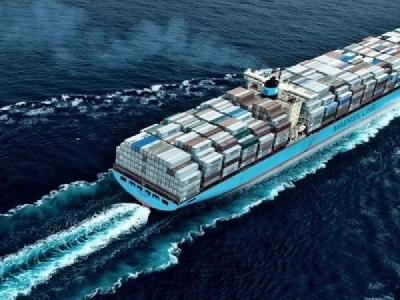
Posted on January 23, 2018
By Dovile Kruvelyte, Wisdom<
Innovation is the driving force of any industry of note. Without it, stagnation sets in and in the age of lightspeed information, that signals the beginning of the end. Shipping is nowhere near this fatalistic prognosis because it continues to change with the times. A few trends are emerging that promise to change the Maritime industry as we have come to know it. Shipping Goes Green International Maritime Organization (IMO) is working with the shipping industry to reduce the emissions of a range of noxious gases and carbon dioxide to make shipping more environmentally friendly. The strictest regulations are applied in regards to sulphur emissions, lowering it to 0.5%, which will enter into force in 2020. This causes shipping companies and organizations to spend a considerable amount of resources to search for viable alternative green ship technologies. Mostly, they include switching adopting better scrubbers, utilizing fuel cells and batteries. Marine exhaust gas scrubbers are air pollution control systems that can be used to remove some particulates and scrub out SOx emissions. The most prevalent type is a hybrid system that combines open-loop and closed-loop characteristics to cope with every situation. But even with the popularity of this system and new developments in scrubber technology, shipowners are reluctant to invest since they don’t reduce sulphur, but just transfer it from the atmosphere to sea. Fuel cells use the chemical energy of hydrogen or another fuel to cleanly and efficiently produce electricity. If the former is the power source the only products are electricity, water, and heat, with no sulphur emissions. Fuel cells are much more efficient than traditional reciprocating engines since their fuel to electricity conversion efficiency can reach up to 60%, while typical engines only reach 35-40%. However, for use in ships fuel cells need a reformer to produce hydrogen from LNG or methanol, which make the cost and size of this technology less attractive than diesel generators already in use. Ship-builders are developing hybrid and electric ships to reduce reliance on fuels that are harmful to the environment. It is expected that ships will be equipped with battery-powered engines allowing for quieter sailing. Unfortunately, compared to diesel generators batteries have a relatively short life cycle. All of these advancements are only the start on the road to completely sustainable and environmentally friendly shipping. Smart Ships To Take Over The advent of smart technologies means that ships can develop the capability to adapt automatically and modify behavior to fit the environment. The topic is already so relevant that successful business owners and experienced innovators will gather to discuss it and many more topics in Hamburg on April 23-24, 2018 during the Green Maritime Forum. Rolls-Royce and Google have teamed up to introduce autonomous ship technology using advanced machine learning algorithms, that means vessels will be capable of self-learning and using experience to improve performance. This will be achieved by installing cameras, sensors and scanners on vessels, providing the opportunity for them to learn from tasks being done by the crew onboard. The collected data then can be uploaded to the cloud where any vessel or control center can access it. This will allow for better informed decision making. On the other hand, there are still challenges ahead to reach the ultimate goal of an unmanned ship. For example, navigation of large vessels through narrow passages, especially taking into account their lack of fast maneuvering, computer-guided docking difficulties and legislation. Is It Smart To Go Green? These two major streams of shipping innovation have been developing concurrently, but only in recent times have started to converge. In regards to autonomous vessels, Norwegian chemical Yara and aerospace company Kongsberg have developed a self-driving container ship that produces zero emissions. Its first voyages will for a while be manned, but it is expected to be carrying out fully autonomous operations from 2020. This project unites green technologies, by making the ship battery-powered, and smart innovation by using GPS, radar, cameras, and sensors to move around and dock on its own. In a similar vein, the Panama Canal Authority introduced the Emissions Calculator. This smart tool will offer the most accurate assessment of vessel carbon emissions, then rank those passing through the Canal to see who had the fewest emissions each month. This will encourage shipowners to reduce the harmful impact on the environment caused by their ships. The process works by utilizing technology already installed onboard, allowing access to their shipping data. This combination of existing and new technologies bodes well for the future of smart green shipping. Since environmentally-friendly practices could be integrated into technologically advanced autonomous vessels and their monitoring procedures, turning the shipping industry on its ear. Source: Wisdom





